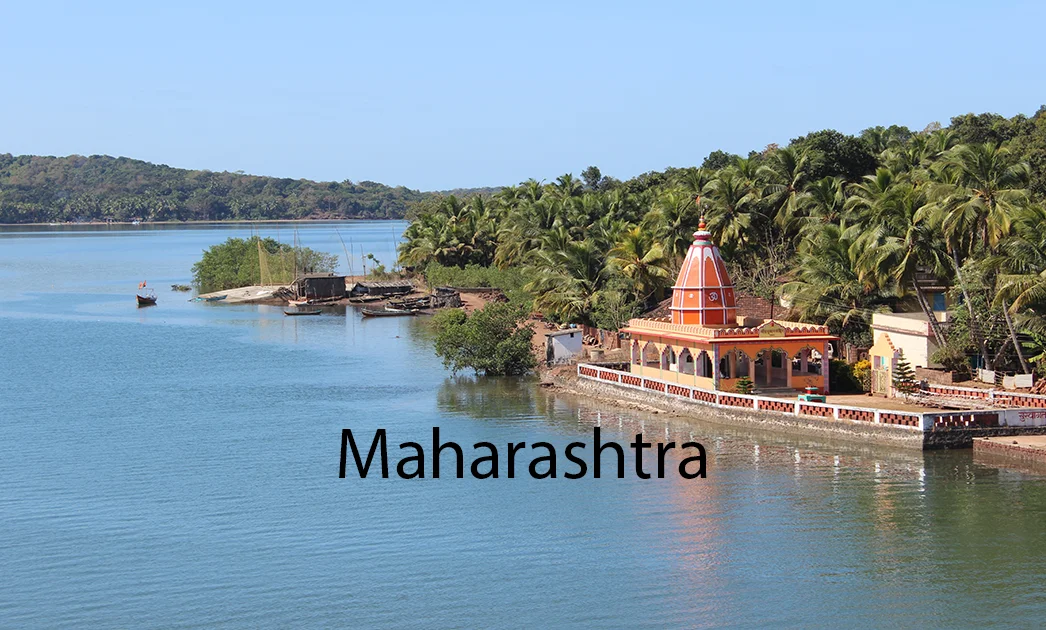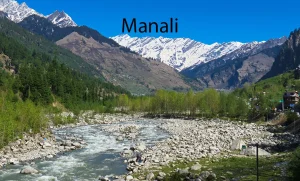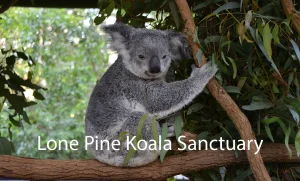Maharashtra
Maharashtra has a long and rich history. The region was initially ruled by the Maurya Empire, then under the Satavahana dynasty for 400 years starting from 230 BCE. After the decline of the Satvahanas, the region came under the rule of the Vakataka dynasty. From the 6th to 8th century, the Chalukyas of Badami, Rashtrakutas, and Western Chalukyas ruled the region.
The Yadava dynasty established their kingdom in Devgiri (present day Daulatabad) in the 12th century. In the early 14th century, the region was conquered by the Delhi Sultanate. It was later captured by the Bahmani Sultanate in the late 14th century. Subsequently, the Bahmani kingdom broke up into smaller sultanates including Ahmadnagar, Berar, Bidar and Bijapur.
In the 17th century, Chatrapati Shivaji Maharaj established the Maratha Empire by unifying the small kingdoms. The Peshwas later controlled the Maratha Empire in the 18th century. Western parts of Maharashtra came under British rule in early 19th century after the three Anglo-Maratha wars. Maharashtra became a state in 1960 after the division of Bombay state into Gujarat and Maharashtra based on linguistic lines.
Geography of Maharashtra
Maharashtra is the second largest state in India covering 3.1% of the total geographical area of the country. It stretches from Kokan in the west to Vidarbha in the east. The Western Ghats or Sahyadri mountains run parallel to the coast of Maharashtra for around 400 km. The state has a 720 km long coastline along the Arabian sea.
The major rivers flowing through the state are Godavari, Krishna, Bhima and Tapi. Maharashtra has a varied climate ranging from tropical in the coastal regions to temperate in the Western Ghats. The vegetation found here includes mangroves, deciduous and evergreen forests.
Location and borders of Maharashtra
Maharashtra is located in the western peninsular region of India. It shares its borders with Gujarat to the northwest, Madhya Pradesh to the northeast, Chhattisgarh to the east, Telangana to the southeast, Karnataka to the south, Goa to the southwest and the Arabian Sea forms the western coast.
The state covers an area of about 3.1 lakh sq km. As per 2022 data, the state has a population of over 128 million, making it the second most populous state in India after Uttar Pradesh. The capital city is Mumbai, also known as the financial capital of the country. Other major cities include Pune, Nagpur, Nashik and Aurangabad.
Major Cities in Maharashtra
Mumbai
History of Mumbai: Mumbai was originally a group of seven islands inhabited by Koli fishermen. The islands were ceded to the Portuguese in 1534 and Bombay was leased to the British East India Company in 1661. It became a major port city under the British. After India’s independence, Bombay became the capital of the Bombay Presidency. The city was renamed Mumbai in 1995.
Culture of Mumbai: Mumbai is known as a cosmopolitan city with a diverse population from various faiths and ethnicities. The city celebrates festivals like Ganesh Chaturthi, Navratri, Diwali, Eid, and Christmas with great fervor. Mumbai has several museums, art galleries, and heritage sites showcasing its rich cultural heritage.
Bollywood in Mumbai: Mumbai is the home of Bollywood and the epicenter of the Indian film industry. Many film studios, production houses, actors, directors and technicians reside in the city. Bollywood produces around 2000 movies per year. The Hindi film industry in Mumbai is valued at over $2 billion as of 2022.
Attractions of Mumbai: Key attractions in Mumbai include the Gateway of India, Chowpatty Beach, Marine Drive, Haji Ali Dargah, Siddhivinayak Temple, Elephanta Caves, Chhatrapati Shivaji Maharaj Terminus, and heritage buildings across South Mumbai. Popular places for shopping and entertainment are Colaba Causeway, Linking Road and Phoenix Marketcity mall.
Pune
History of Pune: Pune was originally known as Punawadi and later renamed to Pune in the 9th century. It served as the capital of the Maratha Empire in the 17th-18th century. Pune saw major development under the Peshwa rule and emerged as a center of politics and education. After India’s independence, Pune became an important industrial and IT hub.
Culture of Pune: Pune is a center of Marathi culture. The city celebrates traditional festivals like Ganesh Chaturthi with great enthusiasm. It has temples showcasing Maharashtra’s architectural style. Pune is also known for its vibrant theatre culture and museums.
Education Hub in Pune: Pune is called the “Oxford of the East” due to its numerous colleges and universities. Prominent institutions located here include Savitribai Phule Pune University, College of Engineering Pune, Bhandarkar Oriental Institute, National Defence Academy, and Fergusson College. Over 100 top engineering colleges attract students across India to study in Pune.
Attractions in Pune: Popular sites in Pune include the Aga Khan Palace, Shaniwar Wada, Pataleshwar Cave Temple, Rajiv Gandhi Zoological Park, Saras Baug, Mulshi and Khadakwasla Dams, and Singhgad Fort nearby. The city is also known for Osho ashram, Mahabaleshwar hill station, and Lonavala nearby.
Nagpur
History of Nagpur: Nagpur has a long history dating back 2000 years. It served as the capital of the Vakataka dynasty in the 3rd century CE. Subsequently, it was ruled by the Gonds and Marathas. Nagpur became part of the Bombay Presidency in the 19th century after being conquered by the British. The city was made the second capital of Maharashtra state in the 1960s.
Culture of Nagpur: Nagpurians are proud of their culture, cuisine, art and landmarks. Sitabuldi Fort is a notable landmark. The city celebrates Dussehra with grandeur as it is the land of Tilak who started public Ganesh Puja. The orange-green rich silk sarees and fabrics of Nagpur are famous exports.
Commercial Hub in Nagpur: Nagpur is a major commercial center in Central India due to its central location. It is an important hub for trade in agriculture produce and has defense manufacturing units. MIHAN project has further expanded opportunities in IT/ITES, cargo, aviation. The city is well-connected via highways, rail and air.
Attractions in Nagpur: Key attractions include the Deekshabhoomi stupa, Dragon Palace Buddhist temple, Ambazari Lake, Maharajbag Zoo, Raman Science Centre, Futala Lake, Khindsi Lake, Pench Tiger Reserve nearby and orange orchards around the city. The city is also known for its parks, temples and delicious oranges.
Language and Culture of Maharashtra
Marathi Language
Marathi is the official language of Maharashtra and one of the 22 scheduled languages in India. It is an Indo-Aryan language belonging to the southern group of Indo-Aryan languages. The earliest examples of written Marathi date back to around 1290 CE.
Marathi is written in the Devanagari script which is also used for Hindi, Sanskrit and some other Indian languages. It has about 42 consonants and 16 vowels. The vocabulary is largely derived from Sanskrit and Prakrit with some influence from Apbhramsa, Persian, Arabic, Portuguese and English as well.
Marathi is spoken by around 83 million people predominantly in Maharashtra and Goa. It is also spoken in some parts of Madhya Pradesh, Gujarat, Karnataka, Telangana and Chhattisgarh. Prominent Marathi poets and authors over the centuries include Sant Dnyaneshwar, Sant Tukaram, Moropant, Vishnushastri Chiplunkar, Hari Narayan Apte, and V.V. Shirwadkar.
Some key features of Marathi include the use of pronominal suffixes, upasargas or prefixes, trills, and aspirated consonants. It is written from left to right like most other Indo-Aryan languages. Most speakers of Marathi are bilingual, often using Hindi or English along with Marathi.
Cuisine
Maharashtrian cuisine makes abundant use of coconut, peanuts, cashews, kokum, and local spices like goda masala. Popular dishes are mostly vegetarian as well as egg dishes.
Popular Veg Dishes
-
- Misal Pav – Spicy curry served with bread
- Pav Bhaji – Spiced vegetable mash with bread
- Vada Pav – Spiced potato fritters in bread
- Sabudana Khichadi – Pearl sago pudding
- Batata Vada – Spicy potato fritters
- Puran Poli – Sweet flatbread
- Aamti – Spicy lentil stew
- Aluchi patal bhaji – Colocasia leaf curry
- Kanda poha – Flattened rice with onions
Popular Non-Veg Dishes
-
- Saoji Chicken – Spicy chicken curry
- Pandhra Rassa – White chicken/mutton curry
- Kolhapuri Mutton – Spicy mutton recipe
- Bombil fry – Bombay Duck fish fry
- Tisrya masala – Clams curry
- Mutton/chicken rassa – Spicy gravy
Desserts
-
- Shrikhand – Strained yogurt
- Puran poli – Sweet flatbread with jaggery filling
- Modak – Steamed rice and coconut dumplings
- Basundi – Thickened milk
- Gur papdi chaat – Jaggery cubes in thickened milk
Read About : Most Popular Indian Dishes
Dance Forms
Lavani – Performed by women wearing nine-yard sarees. Themes are usually romantic or comedic.
Dhangari Gaja – Tribal dance by shepherds worshipping Lord Shiva, depicting sheep and herders. Performed during monsoons.
Povadas – A unique folk dance drama combining costumes, dance and music to narrate historical or mythological stories.
Other folk dance forms include Dindi, Koli, Tamasha, Dashavatara, Gondhal, Maand, etc. Each form represents the unique culture of that region.
Religions
As per 2011 census:
-
- Hinduism – 80.2% of population
- Islam – 10.6%
- Buddhism – 5.8%
- Christianity – 1.0%
- Jainism – 1.3%
- Sikhism – 0.5%
Hinduism: Hindus worship various gods and goddesses like Lord Ganesha, Lord Vitthal, Goddess Mahalaxmi, etc. Major festivals celebrated by Hindus include Ganesh Chaturthi, Navaratri, Diwali.
Islam: Muslims offer namaz five times a day, observe rozas and celebrate Eid-ul-Fitr and Eid-ul-Adha. Sufi shrines like Haji Ali Dargah attract pilgrims of all faiths.
Buddhism: Buddhists follow the teachings of Lord Buddha and visit chaityas and stupas across the state. Popular Buddhist pilgrimage sites are Ajanta Caves, Ellora Caves, Aurangabad Caves.
Christianity: Christians celebrate Christmas and important events related to the Church. Prominent churches are located in Mumbai, Pune, Nagpur.
Tourism in Maharashtra
Maharashtra attracts large numbers of tourists from across India and the world for its natural beauty, heritage sites, temples, beaches, and hill stations. It offers something for everyone – history buffs, nature lovers, adventure seekers, pilgrims, foodies, and more.
Hill Stations
Mahabaleshwar – A popular hill station located in the Sahyadri mountains, at an altitude of 1,353 m. Known for its panoramic views, strawberry farms, lush forests and Hindu temples. Home to India’s oldest amusement park and the majestic Arthur’s Seat Point.
Matheran – Located at an altitude of 800 m in the Western Ghats near Mumbai. It is one of India’s few automobile-free hill stations. Offering 38 viewpoints of the surrounding valleys and hills such as Panorama Point.
Lonavala-Khandala – Twin hill stations near Pune, at an altitude of 625 m. Offers scenic views of the Sahyadri ranges, ancient rock cut caves like Karla and Bhaja, Bhushi dam, Rajmachi fort and several other sightseeing spots.
Beaches
Ganapatipule – A small pilgrimage and beach town along the Konkan coastline. Known for its white sand beach, the 400-year old Swayambhu (self-manifested) Ganesha temple atop a hill and pristine beaches.
Tarkarli – Situated in Malvan region, this white sand beach is lined with Suru trees and Karli river. Popular for scuba diving, snorkeling, dolphin rides and boat cruises to Sindhudurg fort nearby.
Kashid – A secluded beach town north of Alibaug near Mumbai. Known for its white sands, blue seas, water sports and beachfront resorts. Nearby attractions are Korlai fort, Birla Temple and Phansad Wildlife Sanctuary.
Forts
Raigad Fort – Located at 820 m height in Sahyadri mountains. It was the capital of Maratha king Chhatrapati Shivaji Maharaj. This hill fortress offers awe-inspiring views and houses several monuments from the Maratha rule.
Sindhudurg Fort – A coastal fort built in the 16th century on Kurte island. Surrounded by the Arabian Sea from all sides, it has a temple dedicated to Shivaji. Scuba diving is popular around the fort.
Shivneri Fort – Birthplace of Shivaji Maharaj near Pune, located at 1,120 m height. The fort was built in the 16th century with seven gates, several monuments and a famous Shiva temple.
Wildlife in Maharashtra
Maharashtra has diverse flora and fauna with 5 national parks and over 35 wildlife sanctuaries. Important among them are:
Tadoba National Park
Located in the Chandrapur district, Tadoba is Maharashtra’s oldest and largest national park. Spread over 1727 sq km, this tiger reserve is home to 88 big cats as per the 2022 census. Other animals found here include leopards, sloth bears, hyenas, jackals. 200+ species of birds and exotic wildlife can be spotted on jeep safaris.
Melghat Tiger Reserve
Located in Amravati district, Melghat Tiger Reserve sprawls over a forested area of 2768 sq km. It has around 50 tigers and a wide variety of wildlife like panthers, sambar deer, barking deer. Around 320 species of birds are also spotted here on nature trails. The Chikhaldara hill station is located on its periphery.
Sahyadri Tiger Reserve
Comprising the Chandoli and Koyna Wildlife Sanctuaries in Satara district, it spans over 810 sq km of evergreen forests and grasslands. It serves as a corridor between the tiger habitats of Koyna and Radhanagri. Spot tigers, leopards, gaur, deer, giant squirrels on safaris along with over 265 species of birds.
Other major wildlife sanctuaries include the Great Indian Bustard Sanctuary, Kaas Plateau, Phansad, Bhimashankar, Ranmala, Karnala and many more, offering abundant natural beauty and exotic wildlife.
Economy of Maharashtra
Maharashtra is one of the most economically developed states in India with a GSDP of around $430 billion in 2022. Its economy is driven by agriculture, industries and service sector.
Agriculture
- Agriculture employs around 18% of the total workforce in Maharashtra.
- Leading producer of cereals, pulses, sugarcane, oilseeds, cotton, vegetables and fruits.
- Accounts for 25% of national food grain production as of 2022.
- Major crops grown are rice, jowar, bajra, wheat, tur, moong, gram, sugarcane.
Industry
Automobile – Pune, Chakan, Nashik, Aurangabad are major automobile production hubs. Companies like Tata Motors, Mahindra & Mahindra, Bajaj Auto have plants here. Leader in production of two and four wheelers.
Textiles – Mumbai, Solapur, Malegaon, Bhiwandi are key textile production centres. Exports cotton fabrics, clothes and accessories globally. Leading producer of cotton in India.
Other major industries are engineering, petrochemicals, pharmaceuticals, biotechnology, electrical machinery, cement, etc. Mumbai is the financial hub.
Services
Financial Services – Mumbai is the financial capital of India, housing major banks, financial institutions, stock exchanges and insurance companies. Accounts for 60% of market capitalization in India.
IT Services – Major IT parks in Mumbai, Pune, Nagpur. Around 45% of India’s total software exports come from Maharashtra. TCS, Infosys, Wipro have offices in these cities.
Tourism, Entertainment, Retail are other booming service sectors, especially in cities like Mumbai and Pune. The entertainment industry in Mumbai accounts for over 40% of India’s media and entertainment revenues.
Famous Personalities of Maharashtra
Maharashtra has produced many remarkable personalities who have contributed greatly in various fields.
Chhatrapati Shivaji Maharaj (Shivaji Shahaji Bhonsale)
- Brave Maratha warrior king who established the Maratha Empire in the 17th century.
- Revived ancient Hindu political traditions and court conventions. Built a naval force and constructed several hill forts.
- Promoted the use of Marathi and Sanskrit. Known for innovative military tactics and progressive views on governance.
Bal Gangadhar Tilak (Lokmanya Balgangadhar Tilak/Lokamanya Tilak)
- A leading figure in India’s independence movement and pioneer of swaraj. Founded the Deccan Education Society in 1884.
- Started the Ganesh utsav festival to unite people. Imprisoned by British for sedition in 1908 for writings in his newspaper ‘Kesari’. His famous quote “Swaraj is my birthright” inspired many.
Dadasaheb Phalke – Dhundiraj Govind Phalke
- Known as the Father of Indian Cinema, he directed India’s first full length feature film ‘Raja Harishchandra‘ in 1913.
- Made over 95 movies and short films in his career. Honored with Dadasaheb Phalke Award in 1969 for outstanding contribution to Indian Cinema.
Lata Mangeshkar – Hema Mangeshkar
- Legendary playback singer who has recorded thousands of songs in over 36 Indian languages.
- Recipient of the highest civilian awards – Bharat Ratna (2001), Padma Vibhushan, Padma Bhushan and Dadasaheb Phalke Award (1989). Her songs are loved across generations.
Balasaheb Thackeray – Bal Keshav Thackeray
- Indian politician who founded the Shiv Sena party in 1966 to represent the people of Maharashtra.
- Served as the party president for over 4 decades. Known for his strong leadership, powerful oratory skills and provision of jobs for locals.
- Published the popular Marathi newspaper ‘Saamana’ along with being a cartoonist and writer. His role was instrumental in the rise of Hindu nationalism in the late 20th century.
Other famous personalities from the state include Dr. Babasaheb Ambedkar, Mahatma Phule, Dr. Salim Ali, P.L Deshpande, and many more who have left an indelible mark.




